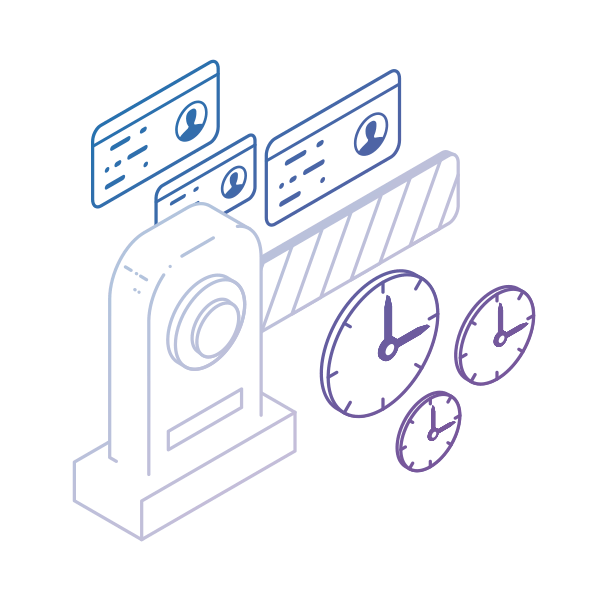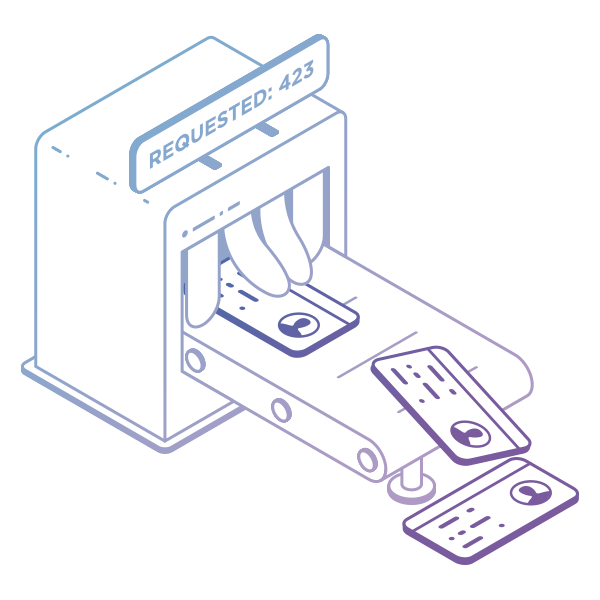Key Takeaways
-
What is a bottleneck? A point in your workflow where work piles up and flow slows down.
-
How to identify a bottleneck? Visualize workflow, track queues and measure cycle time per stage.
-
How to solve bottlenecks? Allocate resources, apply WIP limits, batch work smartly, and use analytics tools.
-
Best tools for bottleneck analysis: Kanban boards, value stream mapping, cycle time heatmaps.
-
Short-term vs. long-term bottlenecks: Temporary setbacks vs. systemic issues that need process redesign.
What Is a Bottleneck in Business or Project Management?
In Lean terms, a bottleneck is the slowest point in your workflow - the place where work arrives faster than it can be processed. Whether it's a software QA stage, a single overworked employee, or outdated equipment, bottlenecks stall productivity and amplify delivery delays.
Even when this step runs at full capacity, it still can't keep up, creating a domino effect that ripples through your entire process.
 Visualizing a process blocker
Visualizing a process blocker
What Are Examples of Bottlenecks in Different Industries?
-
Manufacturing: A broken machine that takes weeks to repair.
-
Healthcare: Long patient wait times due to staff shortages.
-
IT & Software: QA testing not keeping up with development.
-
Logistics: Delays at customs or overloaded distribution hubs.
-
Professional Services: A senior reviewer who's the only one authorized to approve.
What Causes Bottlenecks in a Process?
- Skill/resource shortage
- Inefficient tools or outdated tech
- Poor handoffs and miscommunication
- Third-party dependencies
- Sudden demand spikes
How to Identify Bottlenecks in Workflows
To find bottlenecks quickly and accurately, follow these three steps:
1. Visualize All Workflow Stages
Use a Kanban board to display all work items. Bottlenecks often appear where tasks pile up.
2. Map Queues vs. Activities
Split waiting queues from active work columns. Queues growing faster than they're processed? You've found a bottleneck.
3. Use Cycle Time Heatmaps
Measure the time it takes to complete tasks in each stage. Heatmaps reveal stages with the longest delays.
 Identifying a process bottleneck using Cycle Time Heat Map in Businessmap
Identifying a process bottleneck using Cycle Time Heat Map in Businessmap
How to Fix or Eliminate Bottlenecks in a Process
Once identified, here are practical countermeasures:
-
Never leave a bottleneck idle. Keep it fully utilized.
-
Improve upstream quality. Ensure only ready, high-quality work reaches the bottleneck.
-
Set WIP limits. Reduce overload and multitasking.
-
Batch smartly. Group similar tasks but keep batches small to minimize risk.
-
Add resources. Increase capacity if cost-effective.
Remember: fixing one bottleneck may shift the constraint to another area. Continuous monitoring is key.
What Tools or Techniques Help Identify Bottlenecks?
Lean management solutions, such as Businessmap, combine Kanban visualizations and advanced flow analytics to help you identify and narrow down the process impediments.
Short-Term vs. Long-Term Bottlenecks: What's the Difference?
-
Short-Term: Temporary disruptions like sick leave or a downed server.
-
Long-Term: Chronic issues like staff shortages, inefficient systems, or systemic dependencies.
 Bottleneck monitoring using Blocker Clustering chart in Businessmap
Bottleneck monitoring using Blocker Clustering chart in Businessmap
How Managing Bottlenecks Transformed a Logistics Workflow
BASF's chemical production plant in Catalonia faced critical bottlenecks in planning and logistics due to outdated manual processes and a lack of real-time visibility. Excessive paperwork, disconnected workflows, and delays in production and bottling were creating ripple effects across teams.
The turning point? A strategic digitization initiative.
Key actions to address bottlenecks:
-
Replaced manual planning tools with digital Kanban boards to map and track all tasks in real time.
-
Integrated with SAP, automating the flow of production data into visual workflows.
-
Introduced delay-tracking dashboards to highlight workflow congestion and performance metrics.
-
Implemented pull systems and blockers, allowing the team to surface external dependencies and track their impact on throughput.
-
Digitized inventory and task assignment, reducing lag in storage and distribution processes.
Tangible results from bottleneck reduction:
-
20% drop in administrative overhead by eliminating paper-based coordination.
-
Faster resolution of production anomalies, with shift leaders now able to identify delays immediately.
-
More than 1,000 tasks managed daily, with complete transparency from planning to execution.
-
Improved interdepartmental collaboration and accountability through shared digital boards.
What made the transformation successful?
BASF adopted a phased approach - first introducing Lean practices manually to build familiarity, then scaling up with digital tools. This change management strategy ensured both buy-in and long-term efficiency.
By targeting bottlenecks directly with tailored digital solutions, BASF not only improved logistics but also set the groundwork for scalable operational excellence across multiple sites.
»» Read the full BASF case study
FAQs
Q: What's the difference between a bottleneck and a general delay?
A bottleneck is a recurring point of constraint; delays can be random or one-off.
Q: Can bottlenecks move?
Yes. When you fix one, pressure shifts, and another constraint may emerge.
Q: Are there bottleneck analysis templates?
Check the process improvement solutions for templates, examples, and flow analytics.
Q: How to tell if a bottleneck is technology-related?
Map workflows and evaluate tool usage. If work stalls due to slow or outdated tech, you've found a tech bottleneck.
Businessmap is the most flexible software
to align work with company goals





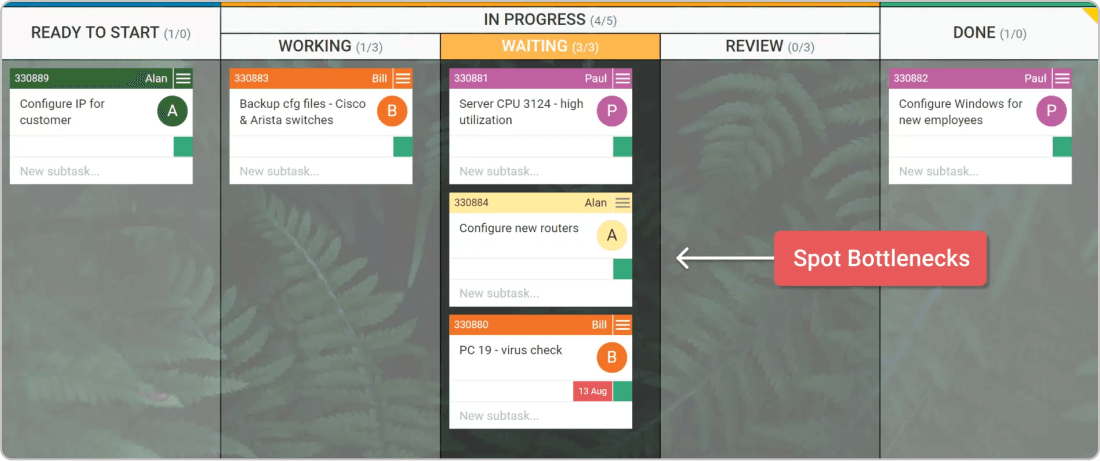 Visualizing a process blocker
Visualizing a process blocker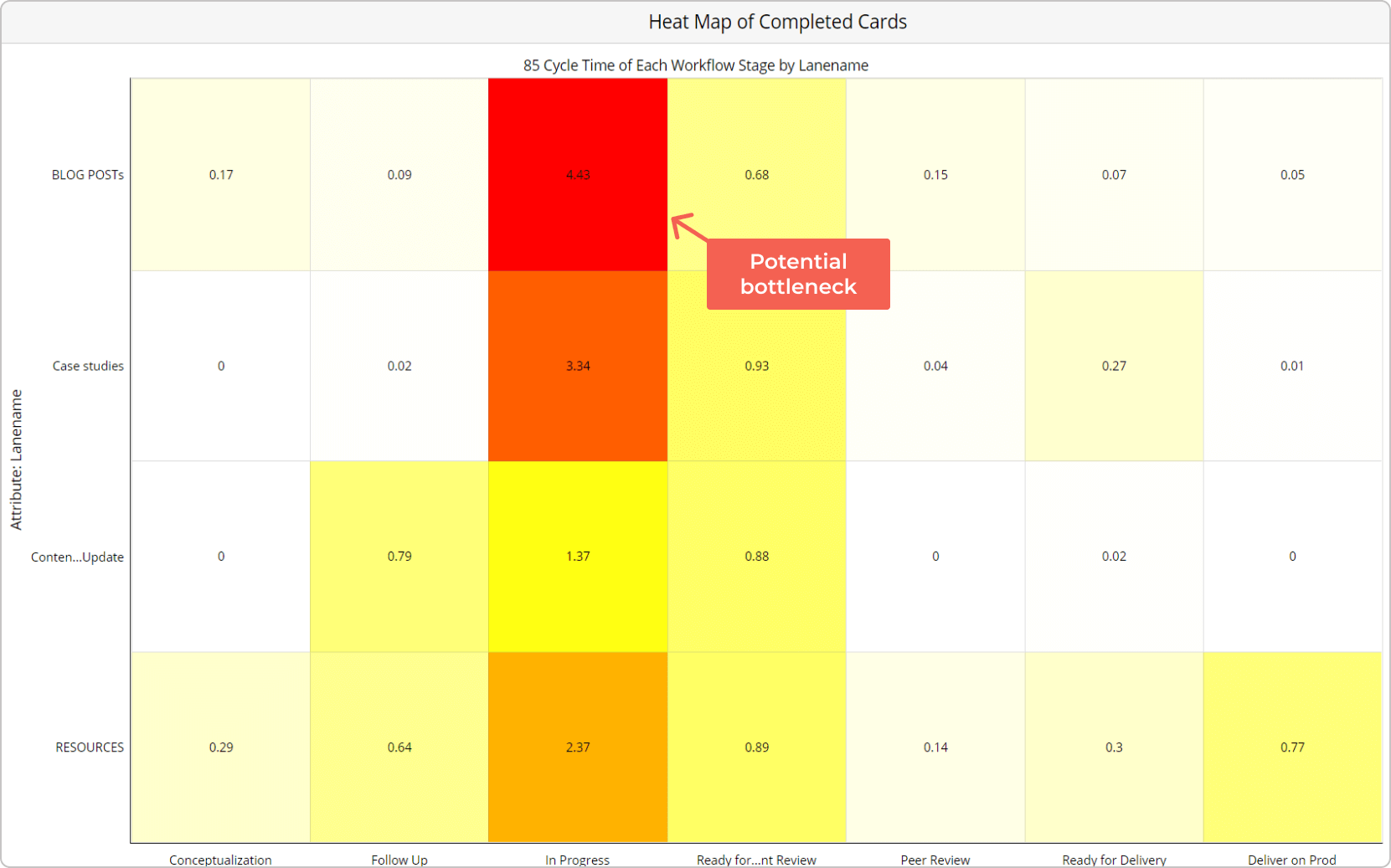 Identifying a process bottleneck using Cycle Time Heat Map in Businessmap
Identifying a process bottleneck using Cycle Time Heat Map in Businessmap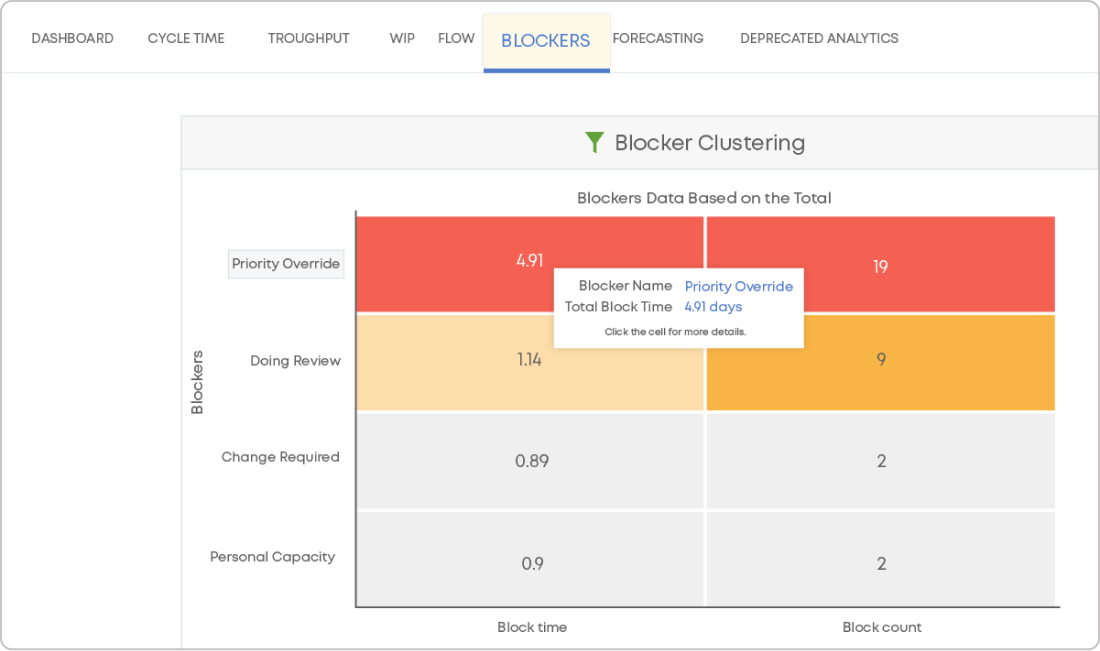 Bottleneck monitoring using Blocker Clustering chart in Businessmap
Bottleneck monitoring using Blocker Clustering chart in Businessmap
